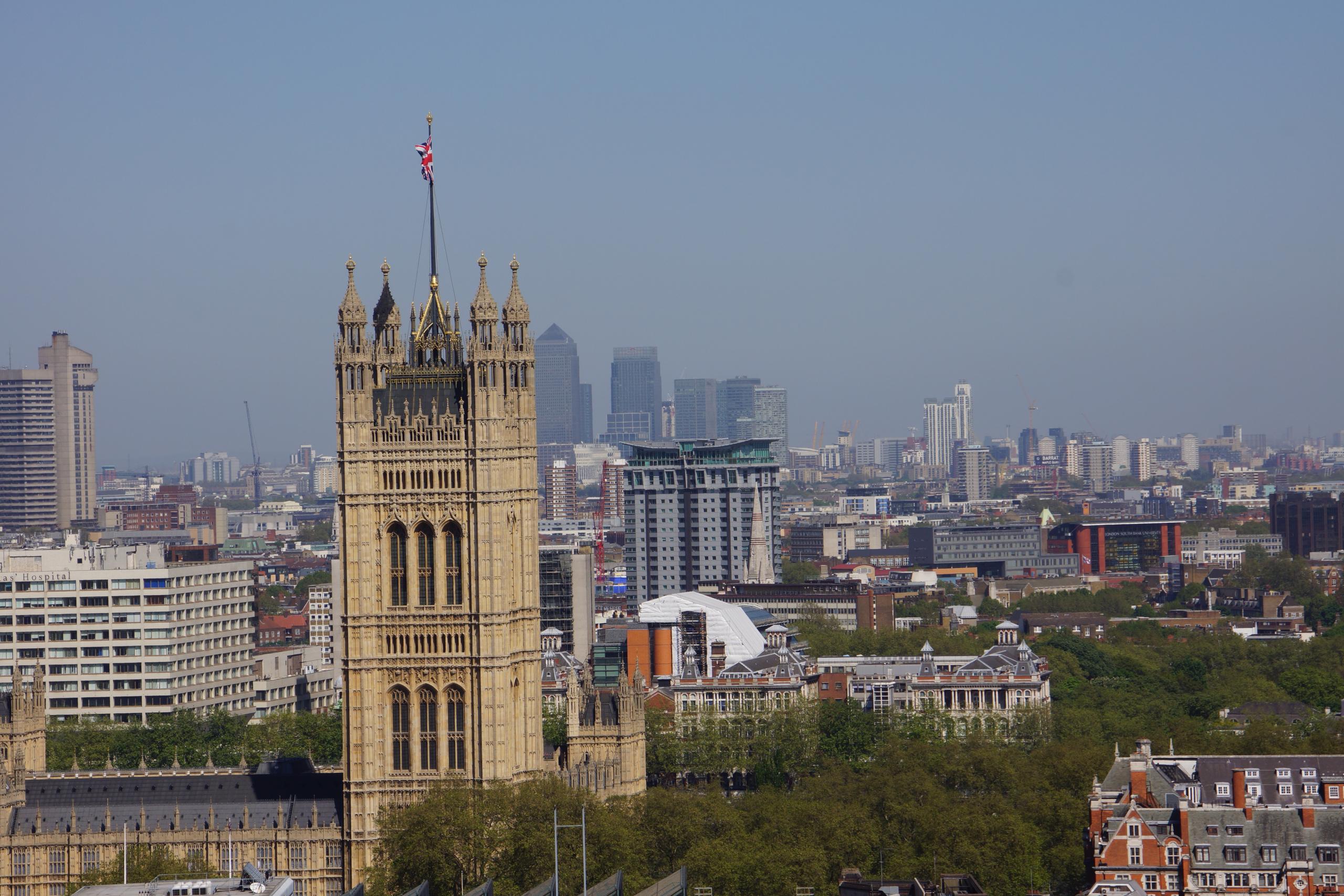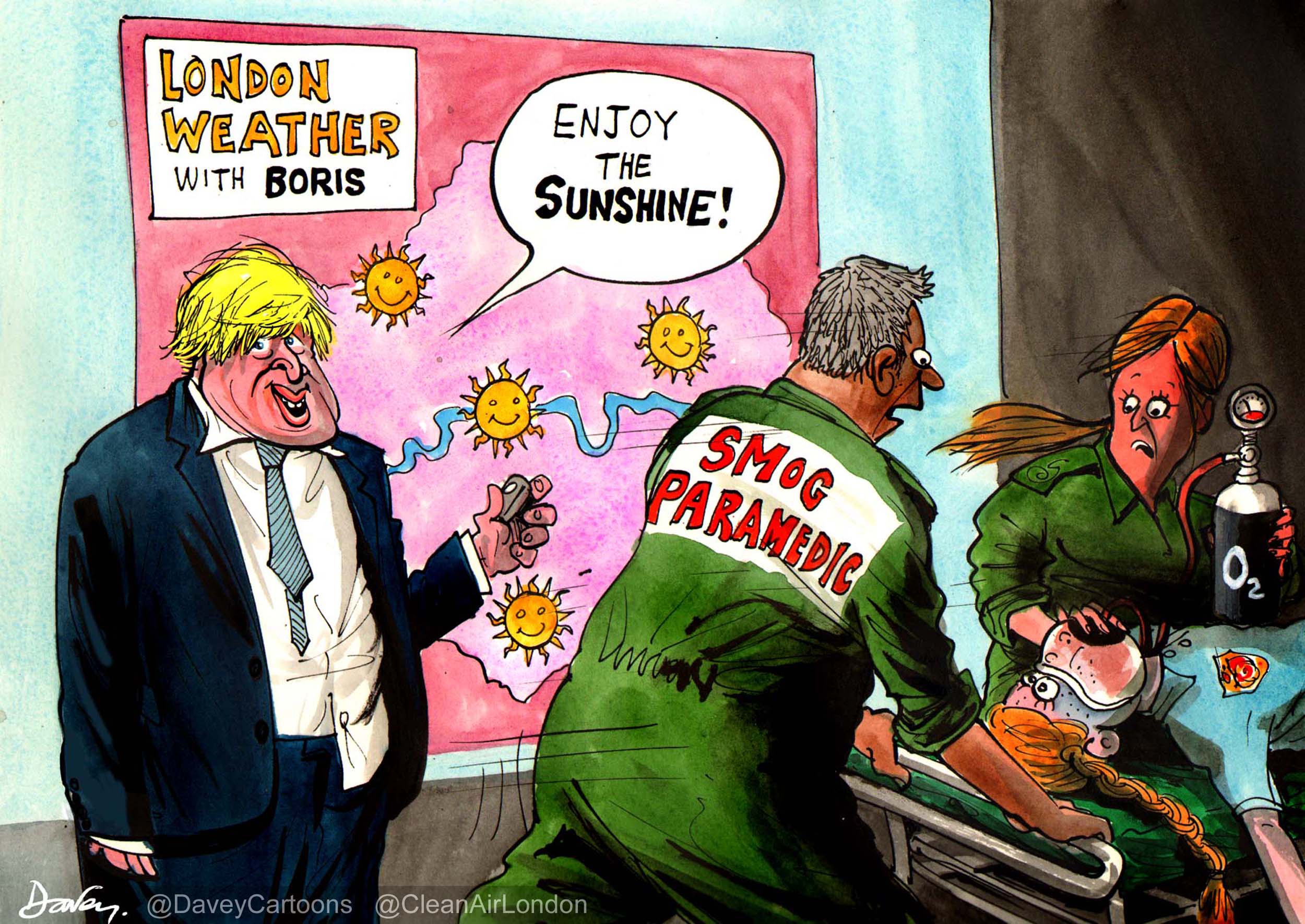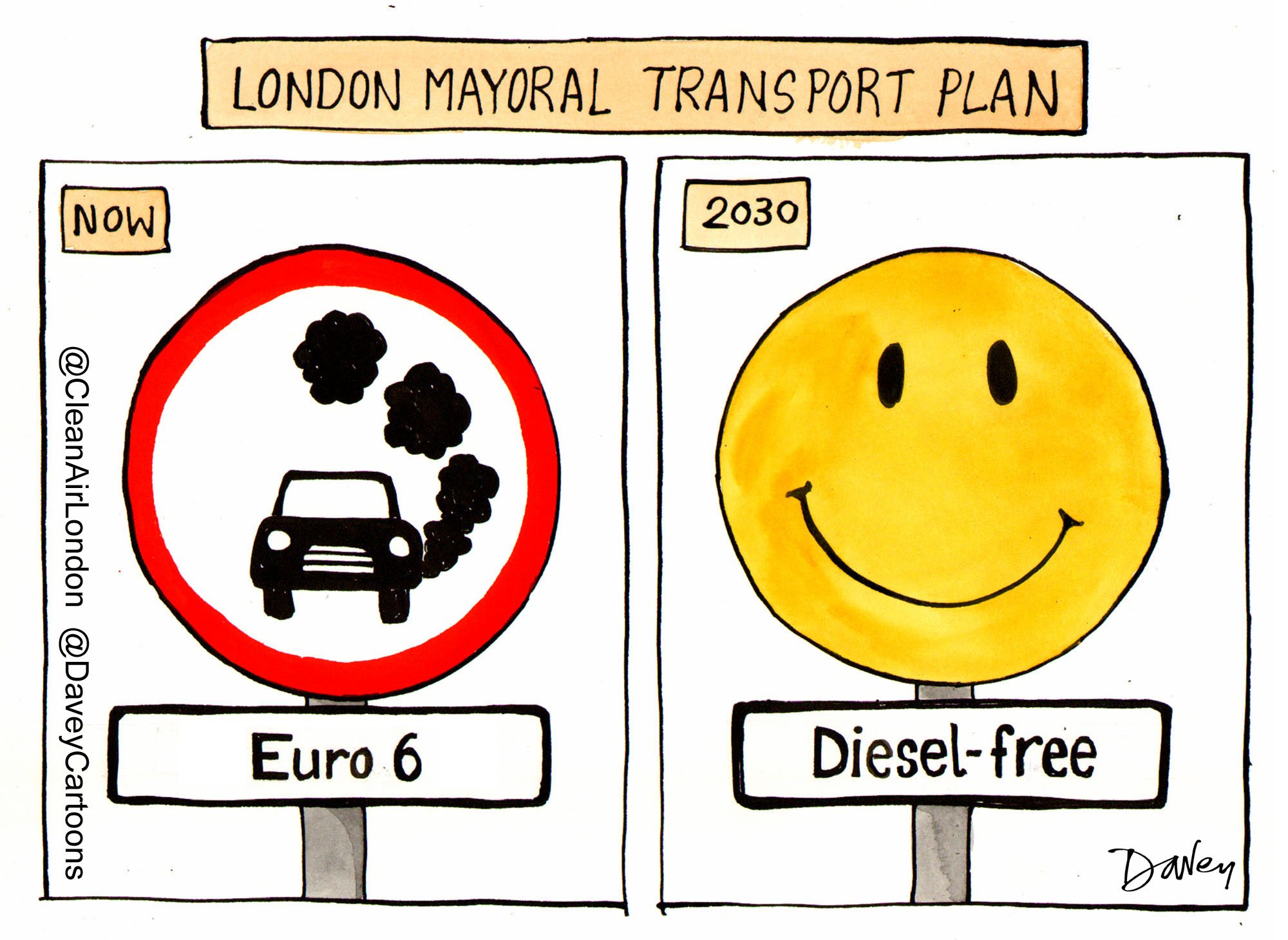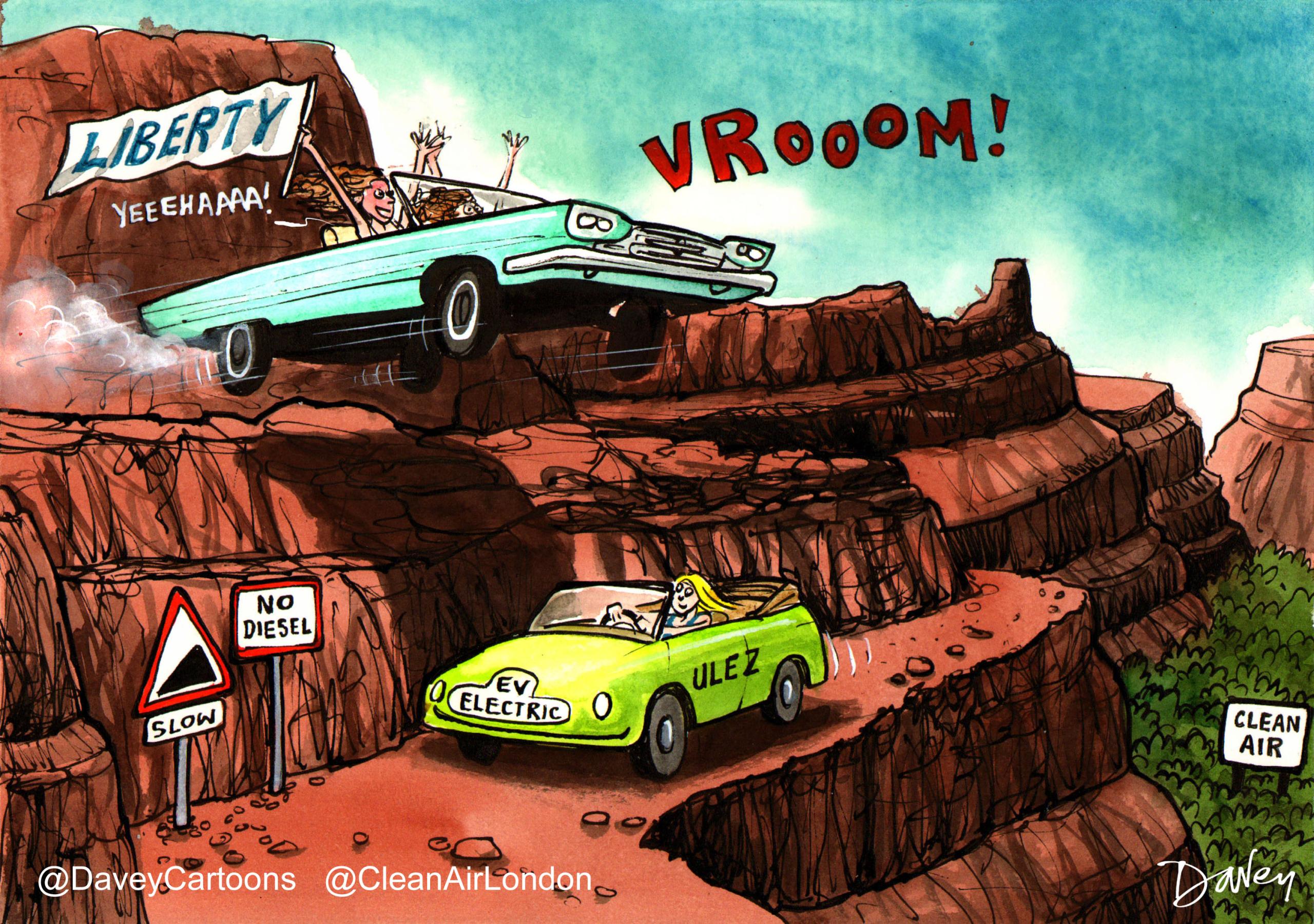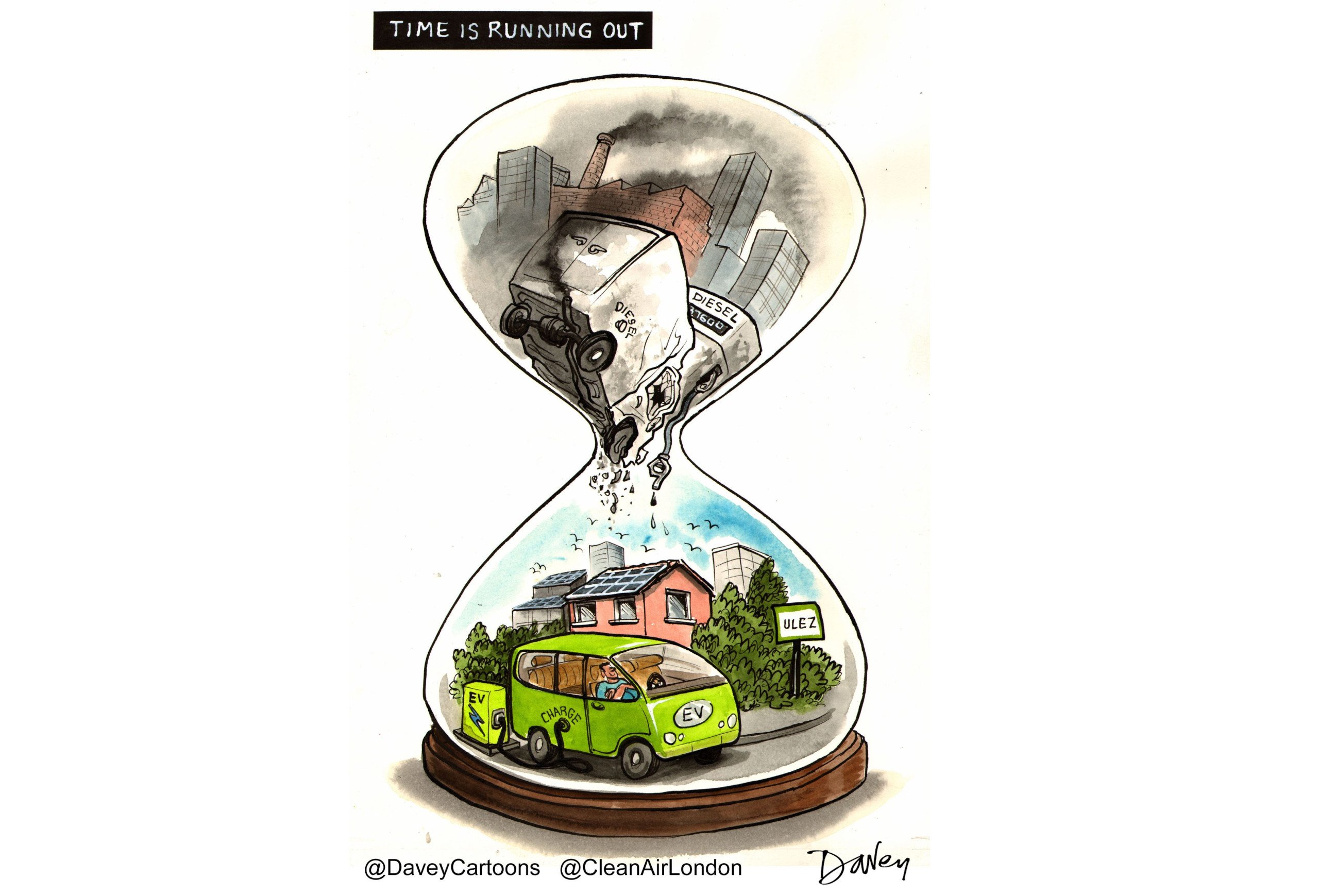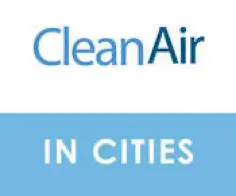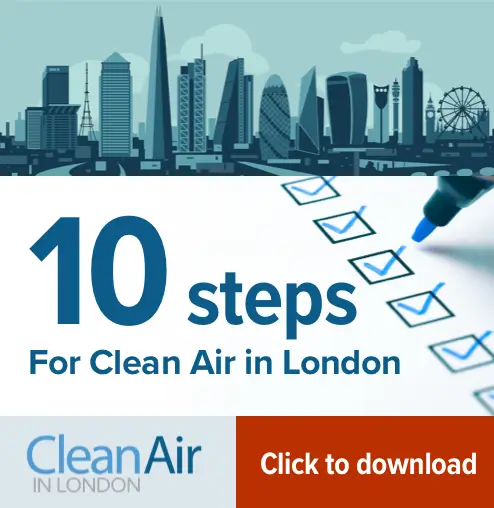Step 1: Investigate
Find out about air pollution near your home, work place or locations you visit
- Read Clean Air in London’s ‘Quick guide to air pollution’ and ‘Introduction to air pollution’.
- Download the Clean Air in Cities app for iOS and android devices (network charges may apply) which shows current levels of ozone (O3) and fine particulate matter (PM2.5) globally and the health impact of long-term exposure to PM2.5 for populations in England.
- Use the LondonAir website to get the latest air pollution monitoring data and pollution forecasts. Also their map of air pollution in 2016.
- Use the Air Quality England website to get the latest air pollution monitoring data and pollution forecasts.
- Check out the amazing Air Aware website which shows metric data from the Breathe London network. Note there is a similar website name for data in a smaller number of boroughs.
- Look at the Government’s official information about air quality on the UK-Air website.
- Check out the Public Health Indicator for the fraction of mortality attributable to long-term exposure to PM2.5 in your local area or region.
- Areas around London’s busiest roads tend to be amongst the most polluted parts of the city. Find out if your home or your child’s school is near one and levels of diesel exhaust emissions on roads carrying over 10,000 vehicles per day on average.
- Search for media articles mentioning Clean Air in London.
Step 2: Adapt
Protect yourself from the dangers of air pollution
- Sign up to receive pollution forecasts from London Air or the CityAir app.
- Is my child’s school near a busy road?
- Plan bike rides and walks to avoid busy main roads – use quieter side roads and off-road routes if available
Step 3: Mitigate
Reduce air pollution for yourself and others
- If possible walk, cycle or take public transport rather than driving in London (and other busy urban areas)
- If you’re getting a new car buy the cleanest car you can. Look for the car’s ‘Euro standard’: this is the air pollution standard the car was constructed to meet ranging from ‘Euro 1’ (worst) to ‘Euro 6’ (best). You can find this in the car’s log book or by searching the Government’s online database
- Avoid older diesel cars, as they tend to be more polluting than petrol models. Note: CO2 impact is different
- Find out about pollution reducing low emission zones in London and other cities around Europe.
- See Clean Air in London’s recommended manifesto for the Mayor to improve air quality, and check out the London Assembly Environment Committee’s report on air quality titled ‘Clean Air for all Londoners‘ (23 March 2022).
Step 4: Research
Find out more about air pollution
- Check Defra’s annual reports on air pollution and their more detailed technical reports.
- Find out what your local authority is doing on air quality.
- The London Boroughs have a duty to review air quality and declare an Air Quality Management Area where pollution levels exceed set limits. Defra has details of AQMAs including maps. Discover whether your Borough’s website has an Air Quality Action Plan.
- Find out about Smoke Control Areas and restrictions that apply within them.
- Here’s an example of excellent work done by the City of London Corporation.
- Check out Mapping for Change’s tips for using nitrogen dioxide diffusion tubes and mapping results
- Look at the Mayor of London’s work on air quality.Check out the latest official advice on the health impacts of poor air quality on the Committee of the Medical Effects of Air Pollution’s website. You can also see advice from the World Health Organisation
- Submit good information requests to find out something new about air quality using Freedom of Information/Environmental Information Regulation powers e.g. to your local authority, Transport for London, the Mayor of London, Defra or the Department for Transport. Emphasise your enquiry relates to ‘emissions to the air’. Check out the Campaign for Freedom of Information’s website or WhatDoTheyKnow.com for guidance and the Camp.
- You might decide to start by asking your local authority for information it has gathered from nitrogen dioxide (NO2) diffusion tubes and/or reporting on them. Read Care4Air’s guide about them. The NO2 diffusion tubes may help you to identify where air pollution exceeds legal limits. The media has shown interest in such statistics.
- Why not ask the Department for Environment Food and Rural Affairs for the top 50 worst locations in your area for annual mean levels of nitrogen dioxide (NO2) for latest calendar year they hold i.e. specifying you want the latest for your area and the latest year?
- Have a look at the Public Health Outcomes Framework item 3.1 which provides estimates of deaths attributable to long-term exposure to dangerous airborne particles (PM2.5). The media has shown interest in such statistics.
- Search for information about emissions or air quality in London on the London Datastore e.g. the London Atmospheric Emissions Inventory.
Step 5: Lobby
Push for full compliance with air quality laws:
- Email or write to the Prime Minister asking him to chair a monthly steering committee which will ensure full compliance with air quality laws throughout London (and the rest of the UK)
- Email the following people to (i) tell them you are worried about poor air quality; (ii) ask what they will do to address your specific concerns; (iii) and ask how and when air quality laws will be complied with in full in areas where you live, work or visit:
– The Rt Hon Steve Barclay MP, Secretary of State at Defra (the Government department responsible for the UK’s compliance with air quality laws)
– The Mayor of London
– Your London Assembly member
– Your local Borough Councillors
- Ask your local MP for help, and monitor what he/she is doing to improve local air quality
Step 6: Campaign for effective local action
Arrange a group meeting and/or start a local action group
- Arrange a group meeting and invite someone like Environmental Research Group at Imperial College London to speak. It might be a club, community group or society meeting or at work and should involve between 20 and 200 people.
- Look at the example of groups such as the Putney Society, who have worked with their local authority, Transport for London and Clean Air in London to push successfully for greater action on local air quality.
- Use social media and search for articles in the media.
Step 7: Oppose
Oppose local developments (e.g. supermarkets) if they will result in breaches of air quality laws
- The Mayor has stated that he will use his planning powers to make sure that all new development in London is at least ‘air quality neutral’ i.e. it will not result in any adverse impact of air quality. Make sure this pledge is implemented by carefully examining plans for major developments in your area and opposing them if they will have a negative impact on air quality. For more details please see the London Plan published by the Mayor in March 2021.
- See Clean Air in London’s research on legal protections but remember it does not provide advice on individual cases
Step 8: Spread the word
Get more people involved in the fight for clean, healthy air
- Share your understanding of poor air quality with others and suggest they read these 10 steps
- Comment about air quality on media websites, Facebook, Twitter or on other social media
- Get involved with a political group, local community group or charities such as Friends of the Earth or the Healthy Air Coalition.
Step 9: Support Clean Air in London
Help us lead the fight for clean air
- Read ‘About’ Clean Air in London
- Follow Clean Air in London on Twitter and share its Tweets
- Like Clean Air in London on Facebook and share its posts
Step 10: Feedback your ideas to Clean Air in London
Give us your ideas
- Tell Clean Air in London via its website or Twitter if you have any better ideas to achieve urgently and sustainably full compliance with World Health Organisation guidelines for air quality throughout London
Note: Clean Air in London builds public understanding of poor air quality but does not provide advice
CAL 186 About_environmental SCIENTIST April 2013_Air Quality
CAL 186 EA letter to Sutton re SWLI 091112_redacted and reduced file size
CAL 186 10 steps_Smog hospitalisations
CAL 208 Presentation to Public Health Presents 271112_Benefits slide only
http://www.theguardian.com/cities/2014/jan/31/air-activists-social-media-pollution-city

